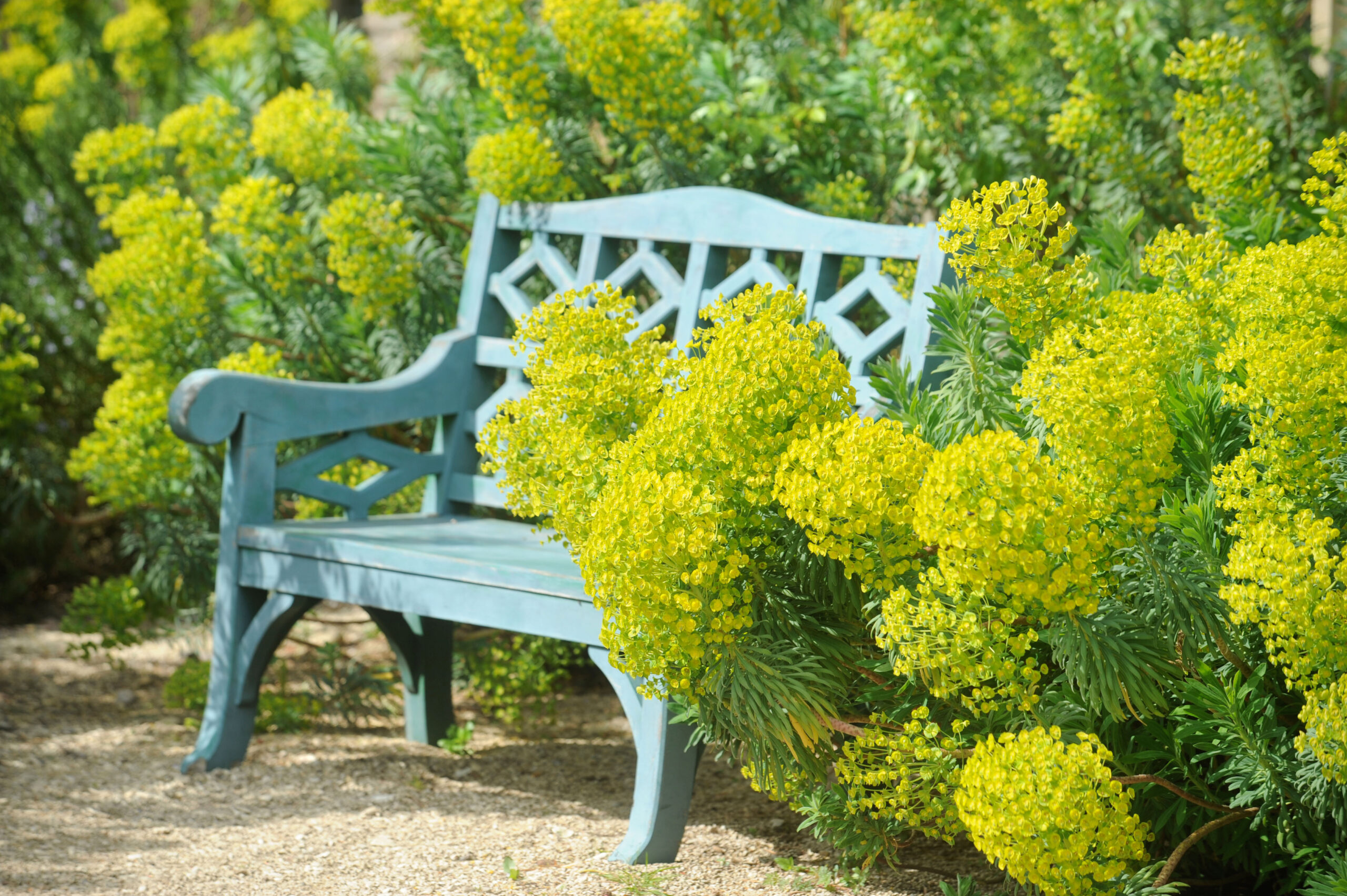Euphorbia characias ‘wulfenii’
£22.00
Frequently Bought Together


Description
Quick Facts
- Common Name: Mediterranean Spurge, Honey Spurge
- Botanical Name: Euphorbia characias subsp. wulfenii
- Plant Type: Evergreen perennial shrub
- Mature Height: 1.2-1.5m
- Mature Spread: 1-1.2m
- Flowering Period: March-June
- Flower Colour: Lime-green to yellow-green bracts
- Foliage: Blue-grey, lance-shaped leaves
- Hardiness: RHS H4 (-10°C to -5°C)
- Soil Requirements: Well-drained, poor to moderately fertile
- Aspect: Full sun to partial shade
- Maintenance: Low
Description
Like a beacon of Mediterranean sunshine in the Irish garden, Euphorbia characias subsp. wulfenii brings architectural drama and year-round structure with its magnificent bottle-brush flower heads. This statuesque beauty transforms any border into a designer’s dream, offering months of spectacular lime-green blooms that seem to glow against Ireland’s often grey skies.
Standing proud with its robust, upright stems clothed in striking blue-grey foliage, this Mediterranean native creates an instant focal point that commands attention throughout the seasons. The spectacular cylindrical flower heads, reaching up to 30cm long, emerge in early spring like giant green candles, their honey-coloured centres attracting beneficial insects while providing nectar when little else is in bloom.
Named after the Greek island of Chios where it was first discovered, this hardy spurge has proven itself remarkably adaptable to Irish conditions, thriving in our unpredictable climate with minimal fuss. Its drought-tolerant nature and ability to flourish in poor soils makes it perfect for challenging spots where other plants might struggle, whilst its evergreen habit ensures garden interest even in the depths of winter.
Magnificent when planted en masse for contemporary impact, or used as a statement plant amongst ornamental grasses and Mediterranean herbs. Pairs beautifully with silvery artemisia, purple alliums, and the soft textures of stipa grasses, creating sophisticated colour combinations that celebrate both structure and movement in the Irish garden.
Caragh’s Garden Notebook
Plant in spring or early autumn, spacing 1-1.2m apart to allow for mature spread. Prepare planting site by improving drainage with grit or sharp sand if your soil tends to be heavy – this is crucial for success in Irish conditions where winter wet can be problematic.
Thrives in poor to moderately fertile, well-drained soil with a pH of 6.0-8.0. Avoid rich, moisture-retentive soils which can lead to soft growth and reduced flowering. Perfect for coastal gardens as it tolerates salt spray and wind exposure.
Excellent for container growing – use a soil-based compost mixed with extra grit for drainage. Choose a substantial pot at least 40cm wide to accommodate the root system and prevent toppling.
After flowering in late spring, cut spent flower stems back to ground level, wearing gloves as the milky sap can cause skin irritation. New shoots will emerge from the base for next year’s display. Avoid cutting into old wood as this rarely regenerates successfully.
Self-seeds readily in suitable conditions – collect seeds in summer for propagation or allow natural seeding for informal drifts. Remove unwanted seedlings whilst small to prevent overcrowding.





